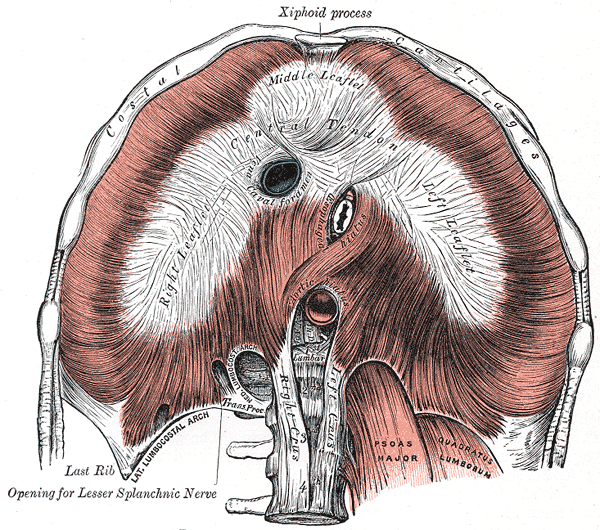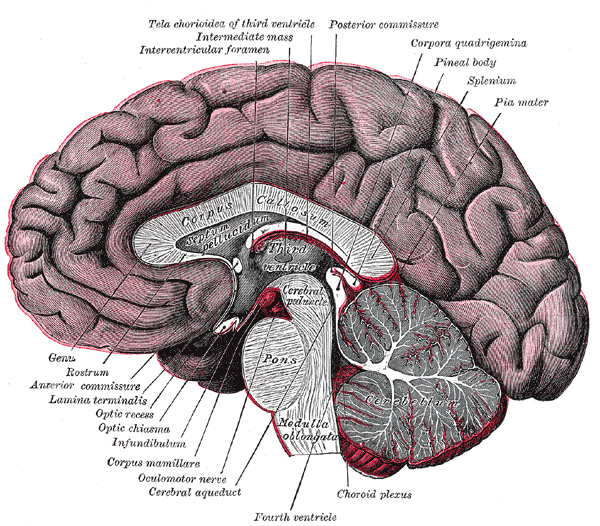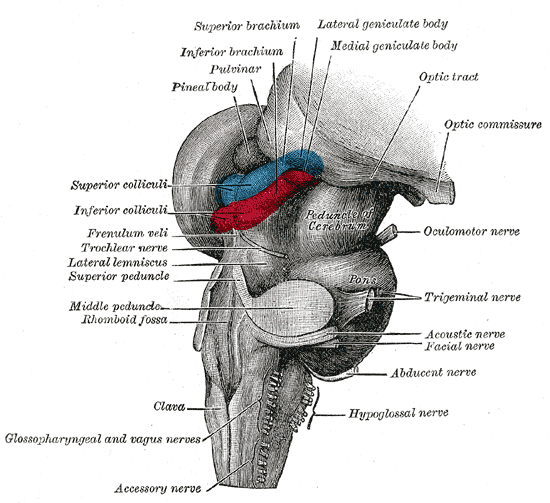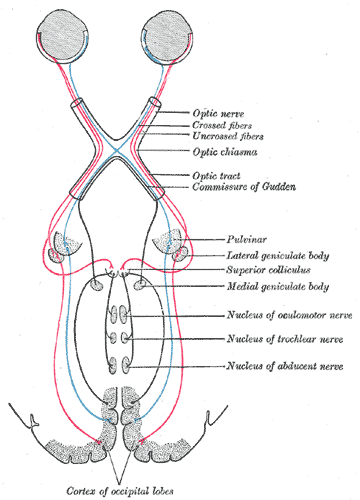5 gates cavities skin breath
Moderators: nyang, Dvivid, Inga
4 posts
• Page 1 of 1
5 gates cavities skin breath
i had not practised 4 gates breathing but i believe i experienced it.it felt like i had 4 discs in my hands and feet and one on top my head.i would be interested to hear somebody elses experience.i train alone.
- vamos
- Forum Contributor
- Posts: 45
- Joined: Tue Oct 28, 2008 9:37 am
- Location: england
I am not practising anyone system but mix as i see fit.i understand to train is important but in some ways i am more interested in the understanding of what is happening inside of me and the effects it produces and why it is happening and how it affects me etc. I train acu-points,hard crane qigong,8 peices brocade,qigong massage,yi yin jin,5 animals,4 seasons,scholar qigong (very intersted in breathing and theory) and wild goose qigong.
wild goose qigong(just the pre-64) is more powerful to me than 8 peices brocade etc as a set.beautiful.very nice.
wild goose qigong(just the pre-64) is more powerful to me than 8 peices brocade etc as a set.beautiful.very nice.
- vamos
- Forum Contributor
- Posts: 45
- Joined: Tue Oct 28, 2008 9:37 am
- Location: england
Breathing is an excellent place to start attenuating foreground signals until they "drop below the noise floor" and other background processes become foreground processes...which can then be worked on and attenuated, peeling back another layer of the onion...
Of course the first parts of that involve harmonizing the main components of breath, aligning the energetic maxima of the movements so that they may combine increasingly efficiently: front of abdomen, perineum (huiyin), diaphragm, quadratus lumborum (kidneys, back), and obliques on the side. Each component has a different range and different amount of energetic draw, energetic input into the breath/energy equation.
-Once you have achieved proficiency with that first step, pay attention to the air passageways. Figure out all areas of muscular input (flare your nostrils, expand/compress sinuses e.g. pull air there, do the same with the back of the throat, trachea, bronichi, lungs.) When you get a good idea for how muscular input is affecting breath, then let go of air passageways completely - the more forcefully the air flows through, the more the walls need to harden to support the structure (and by extension the more energy is required/consumed for the action.) You'll have some work to do, build muscle memory. At this point you're breathing pretty deeply into the lower abdomen, have a look at this pic here:

http://en.wikipedia.org/wiki/Thoracic_diaphragm
The diaphragm starts high at the xiphoid process and ends low at the lumbar spine where the lower diaphragm tendons overlap with the psoas muscles. "Worldly" breathing, most people descend the diaphragm from the center (vena caval foramen, esophageal foramen) and balance the pressures by buffering air flow with the sinuses. This method of breathing is rootless - for when you learn to let go of the air passageways and no longer have that stabilizing buffer from the sinuses, as you slow the breaths down you wind up with this 'hiccup' in your breath as the diaphragmatic movement is reconciled. (It has to do with tensile strength of muscles vs tendons.) To "root" your breath, begin your inhales from the very bottom of the diaphragm where it overlaps with the psoas muscles. This is what masters refer to as "breathing into the dantien" because the psoas is a major energetic component (tenderloin aint the choiciest cut for nuttin!) Breathing in this quasi-saintly fashion lets the motion of the diaphragm begin at the psoas and propagate upward and forward from one end of the diaphragm to the other. Eventually the processes become streamlined enough that "external breathing" disappears (i.e. an outside observer does not see you breathing. This "start at the bottom" is relevant for both natural ab breath and reverse breathing, but the ensuing motions are different - but this key piece at the beginning sets the stage for good breath timing no matter which breathing strategy is used.
Meditative Breath should always be continuous (the "one breath") with no pauses in between inhale and exhale (in certain circumstances it is used, but in normal meditative breath, no pause. So if you need to manifest "push a car" that is one application of partial breath hold - also things like Tum'mo have certain breath-hold strategies - but if you are trying to cultivate supreme empty stillness, the preferable method is to "make it all one" by smoothing the transitions between inhale and exhale and eventually the two become an indistinguishable whole, and with no turbulence, all that extra energy is well utilized if you keep up the One Breath...) By extension, a good standing practice combined with mindful breath will help whole-body rooting for martial purposes as you enhance your 'grounding' capabilities via this connection of breath to psoas (which in turn connect to the femurs, tendon connections run right down to the bottom of the feet, ergo yongquan breathing.)
Having gotten this far in practice you'll have developed a good deal of meditative-concentration, but we'll wait just a bit to go up to higher centers. Next thing to look at is the solar plexus, or...the Celiac Plexus, if you want to assign a logical physical structure. http://en.wikipedia.org/wiki/Celiac_plexus Pay attention to the other plexuses that comprise the Celiac.
The celiac plexus is just under the diaphragm; the only stuff above the diaphragm is the heart & lungs. Mostly all you need to do here is study the structures and learn to mindfully relax it all while doing meditative breathing. Practice at this level you begin to be able to do things like help decrease blood pressure (and an even more active implementation, assume a little more blood into your liver to have a more profound reduction, but it is by nature active and very temporary.) Experience here helps assist the bodily processes ease on down, and you begin to gain a little more of an awareness of the juxtaposition between sympathetic and parasympathetic nervous systems - more precisely, the difference between the nerve trunks coming off of your spinal cord and the Vagus nerves which come out of the midbrain Cranial nerve plexus - although, parts of the parasympathetic also traverse the spinal cord (coincidentally the CN trunks "are your senses" including olfactory, optic, etc...and parasymathetic is also responsible for things like feeling of distension in the intestines and such.)

Actually if you look closely you see a sympatheitc/parasympathetic loop, a la the mco
Hah, speaking of this juxtaposition and the olfactory nerves - those are the only nerves that continually regenerate - your olfactory bulbs extend out into your nasal passages and they are very much like a mass air meter in your car. When the nerves detect a lot of air coming in fast, that feeds back through your vagus nerve to the heart, telling it to beat faster, which also has the pulmonary situation between heart and lungs affected as well. In other words, you can slow your breath, heartbeat, bodily processes down only so fast before feedback mechanisms kick in that will thwart the slowing - so progress must be done gradually otherwise it becomes counterproductive. (There's also mechanisms for O2, CO2 blood content and such that are also in the feedback equation.)
Do all that above and get your breaths up to 30 seconds and you will notice changes beginning to happen. Get them up to a minute and external breathing almost completely disappears, all of the turbulence in the air passageways disappears and you will no longer feel yourself breathe, sense data is foregone in favor of core processes, and there is but a glow accompanying awareness - and "so long as you keep doing that which generates these phenomena" (e.g. the harmonious breath-motion) the condition of utter complete stillness will manifest. Concentrate on the effects instead of what's producing them and you'll lose that one-pointed awareness.
The upper center is the last bit I'll cover for right now - it is "the seat of awareness" at the top of the brain stem where the pineal/pituitary dynamic is. Actually, that is among the first things to do - "fixing spirit in its original cavity" - basically maintain one-pointed concentration and cultivate it, eventually light will manifest there if practice is done properly.
You can "breathe into" the midbrain pretty effectively, as the sphenoid sinus lies just on the other side of bone from the seat of awareness. It is also called the Ni Wan, or mud pill palace, about the size of a grain of rice - the profound opening of which equates to "opening the wisdom eye" which isnt quite the same as opening the third eye. It is pretty important to cultivate the wisdom aspect, it is a bit dangerous to have an open third eye without sufficiently developed wisdom. (But dont worry, the third eye will only open when the semiconductor nature of bone is breached by sufficient energetic amplitude!) As such, any practices done with the brain must be done gently, if you're forceful at all it is but a recipe for a headache. By doing it gently and purposefully, the totaility of the practice induces a harmonious wave that propagates back up the vagus nerves and regulates midbrain function, right in the heart of things like serotonin/melatonin production - so a downstream result is a blissful feeling permeating your entire being, sorta like the endorphin rush you get from a good workout, except that with time and practice, the blissful feeling stays present all the time. If you look at pics 719, 722 you'll see the Colliculi in very close proximity to the pineal - this is the reason to "look down your nose" in meditation - slightly crossing the eyes changes the energetic pattern just a bit and the central channel is focused upon a bit more - so when "driving vitality into the lower dantien" you're actually reverse-looking down the central channel into the lower center and it gives you a clearer "feel" for the energy center.



By cultivating one-pointed concentration you are effectively diverting the thought-stream-energy; harmonious breathing raises a significant amplitude of energy created by the harmonious breathing and eventually it becomes a path of least resistance for thought-stream-energy, leading to a quieter, calmer, clearer mind. I found some pretty interesting practice parallells between this phenomena and some quantum mechanical probability equations, all totally consistent! Brain cells use 10x the oxygen of any other cell type and also uses the most bioelectricity (or chi if you want to get technical & amorphous!) so the practice of mindful breathing, fully focusing your awareness on the physical mechanisms of breath really frees up a lot of resources and the first place the extra resources go is to core processes.
Many thanks to Dr Yang for helping another puzzle player assemble some pieces /\
Of course the first parts of that involve harmonizing the main components of breath, aligning the energetic maxima of the movements so that they may combine increasingly efficiently: front of abdomen, perineum (huiyin), diaphragm, quadratus lumborum (kidneys, back), and obliques on the side. Each component has a different range and different amount of energetic draw, energetic input into the breath/energy equation.
-Once you have achieved proficiency with that first step, pay attention to the air passageways. Figure out all areas of muscular input (flare your nostrils, expand/compress sinuses e.g. pull air there, do the same with the back of the throat, trachea, bronichi, lungs.) When you get a good idea for how muscular input is affecting breath, then let go of air passageways completely - the more forcefully the air flows through, the more the walls need to harden to support the structure (and by extension the more energy is required/consumed for the action.) You'll have some work to do, build muscle memory. At this point you're breathing pretty deeply into the lower abdomen, have a look at this pic here:

http://en.wikipedia.org/wiki/Thoracic_diaphragm
The diaphragm starts high at the xiphoid process and ends low at the lumbar spine where the lower diaphragm tendons overlap with the psoas muscles. "Worldly" breathing, most people descend the diaphragm from the center (vena caval foramen, esophageal foramen) and balance the pressures by buffering air flow with the sinuses. This method of breathing is rootless - for when you learn to let go of the air passageways and no longer have that stabilizing buffer from the sinuses, as you slow the breaths down you wind up with this 'hiccup' in your breath as the diaphragmatic movement is reconciled. (It has to do with tensile strength of muscles vs tendons.) To "root" your breath, begin your inhales from the very bottom of the diaphragm where it overlaps with the psoas muscles. This is what masters refer to as "breathing into the dantien" because the psoas is a major energetic component (tenderloin aint the choiciest cut for nuttin!) Breathing in this quasi-saintly fashion lets the motion of the diaphragm begin at the psoas and propagate upward and forward from one end of the diaphragm to the other. Eventually the processes become streamlined enough that "external breathing" disappears (i.e. an outside observer does not see you breathing. This "start at the bottom" is relevant for both natural ab breath and reverse breathing, but the ensuing motions are different - but this key piece at the beginning sets the stage for good breath timing no matter which breathing strategy is used.
Meditative Breath should always be continuous (the "one breath") with no pauses in between inhale and exhale (in certain circumstances it is used, but in normal meditative breath, no pause. So if you need to manifest "push a car" that is one application of partial breath hold - also things like Tum'mo have certain breath-hold strategies - but if you are trying to cultivate supreme empty stillness, the preferable method is to "make it all one" by smoothing the transitions between inhale and exhale and eventually the two become an indistinguishable whole, and with no turbulence, all that extra energy is well utilized if you keep up the One Breath...) By extension, a good standing practice combined with mindful breath will help whole-body rooting for martial purposes as you enhance your 'grounding' capabilities via this connection of breath to psoas (which in turn connect to the femurs, tendon connections run right down to the bottom of the feet, ergo yongquan breathing.)
Having gotten this far in practice you'll have developed a good deal of meditative-concentration, but we'll wait just a bit to go up to higher centers. Next thing to look at is the solar plexus, or...the Celiac Plexus, if you want to assign a logical physical structure. http://en.wikipedia.org/wiki/Celiac_plexus Pay attention to the other plexuses that comprise the Celiac.
The celiac plexus is just under the diaphragm; the only stuff above the diaphragm is the heart & lungs. Mostly all you need to do here is study the structures and learn to mindfully relax it all while doing meditative breathing. Practice at this level you begin to be able to do things like help decrease blood pressure (and an even more active implementation, assume a little more blood into your liver to have a more profound reduction, but it is by nature active and very temporary.) Experience here helps assist the bodily processes ease on down, and you begin to gain a little more of an awareness of the juxtaposition between sympathetic and parasympathetic nervous systems - more precisely, the difference between the nerve trunks coming off of your spinal cord and the Vagus nerves which come out of the midbrain Cranial nerve plexus - although, parts of the parasympathetic also traverse the spinal cord (coincidentally the CN trunks "are your senses" including olfactory, optic, etc...and parasymathetic is also responsible for things like feeling of distension in the intestines and such.)

Actually if you look closely you see a sympatheitc/parasympathetic loop, a la the mco
Hah, speaking of this juxtaposition and the olfactory nerves - those are the only nerves that continually regenerate - your olfactory bulbs extend out into your nasal passages and they are very much like a mass air meter in your car. When the nerves detect a lot of air coming in fast, that feeds back through your vagus nerve to the heart, telling it to beat faster, which also has the pulmonary situation between heart and lungs affected as well. In other words, you can slow your breath, heartbeat, bodily processes down only so fast before feedback mechanisms kick in that will thwart the slowing - so progress must be done gradually otherwise it becomes counterproductive. (There's also mechanisms for O2, CO2 blood content and such that are also in the feedback equation.)
Do all that above and get your breaths up to 30 seconds and you will notice changes beginning to happen. Get them up to a minute and external breathing almost completely disappears, all of the turbulence in the air passageways disappears and you will no longer feel yourself breathe, sense data is foregone in favor of core processes, and there is but a glow accompanying awareness - and "so long as you keep doing that which generates these phenomena" (e.g. the harmonious breath-motion) the condition of utter complete stillness will manifest. Concentrate on the effects instead of what's producing them and you'll lose that one-pointed awareness.
The upper center is the last bit I'll cover for right now - it is "the seat of awareness" at the top of the brain stem where the pineal/pituitary dynamic is. Actually, that is among the first things to do - "fixing spirit in its original cavity" - basically maintain one-pointed concentration and cultivate it, eventually light will manifest there if practice is done properly.
You can "breathe into" the midbrain pretty effectively, as the sphenoid sinus lies just on the other side of bone from the seat of awareness. It is also called the Ni Wan, or mud pill palace, about the size of a grain of rice - the profound opening of which equates to "opening the wisdom eye" which isnt quite the same as opening the third eye. It is pretty important to cultivate the wisdom aspect, it is a bit dangerous to have an open third eye without sufficiently developed wisdom. (But dont worry, the third eye will only open when the semiconductor nature of bone is breached by sufficient energetic amplitude!) As such, any practices done with the brain must be done gently, if you're forceful at all it is but a recipe for a headache. By doing it gently and purposefully, the totaility of the practice induces a harmonious wave that propagates back up the vagus nerves and regulates midbrain function, right in the heart of things like serotonin/melatonin production - so a downstream result is a blissful feeling permeating your entire being, sorta like the endorphin rush you get from a good workout, except that with time and practice, the blissful feeling stays present all the time. If you look at pics 719, 722 you'll see the Colliculi in very close proximity to the pineal - this is the reason to "look down your nose" in meditation - slightly crossing the eyes changes the energetic pattern just a bit and the central channel is focused upon a bit more - so when "driving vitality into the lower dantien" you're actually reverse-looking down the central channel into the lower center and it gives you a clearer "feel" for the energy center.



By cultivating one-pointed concentration you are effectively diverting the thought-stream-energy; harmonious breathing raises a significant amplitude of energy created by the harmonious breathing and eventually it becomes a path of least resistance for thought-stream-energy, leading to a quieter, calmer, clearer mind. I found some pretty interesting practice parallells between this phenomena and some quantum mechanical probability equations, all totally consistent! Brain cells use 10x the oxygen of any other cell type and also uses the most bioelectricity (or chi if you want to get technical & amorphous!) so the practice of mindful breathing, fully focusing your awareness on the physical mechanisms of breath really frees up a lot of resources and the first place the extra resources go is to core processes.
Many thanks to Dr Yang for helping another puzzle player assemble some pieces /\
- joeblast
- Forum DemiGod
- Posts: 943
- Joined: Thu Feb 22, 2007 2:20 pm
- Location: CT
4 posts
• Page 1 of 1
Who is online
Users browsing this forum: No registered users and 31 guests